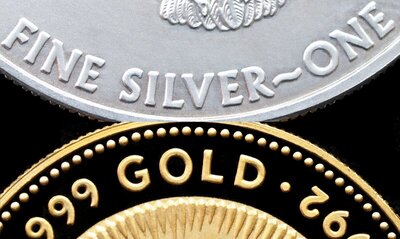Market Update
In classic turn-around Tuesday fashion, risk assets are in the process of tentatively recovering a decent portion of Monday’s risk-off spurred losses. The S&P 500 index closed more than 1.0% lower on Monday amid concerns about the acceleration in the global spread of the Omicron variant as well as pessimism about the ability of the Biden administration to push through the flagship legislation of its economic agenda. Despite a lack of any notable fresh macro catalysts, S&P 500 index futures are this morning trading higher by about 0.6%, with futures having reclaimed to 4600 level as investors tentatively buy the recent dip.
Equity bulls might reason that recent selling pressure is overdone given that 1) negotiations on Biden’s $1.75T Build Back Better bill with Democrat Senator Joe Manchin, who announced he would not support the bill in its current form over the weekend, are likely to continue next year and 2) evidence from South Africa continues to suggest that Omicron, though significantly more transmissible than prior strains, is not nearly as severe as the delta variant, with hospitalisations in the country not having seen a massive spike. The hope is that in developed countries with better vaccination rates (though also with older, less healthy populations), hospitals will not get overwhelmed, and lockdowns can largely be avoided.
But that is a very hopeful take. European nations are already moving to tighten lockdowns and two surveys out this morning, one in the UK (the December CBI Distributive Trades survey) and one in Germany (the December GfK Consumer Climate survey) both saw sharp deterioration as consumer/retail sentiment took a hit from recent surge in Omicron infections and threat of lockdowns. According to the lead economist of the UK survey, the data “confirms what we’ve been hearing anecdotally about Omicron’s chilling impact on activity on the High Street”. Moreover, early data in the UK suggests Omicron infection is not associated with lower rates of hospitalisation, which is not what we wanted to hear.
Long story short, the near-term economic outlook in Europe has darkened significantly in recent weeks and hence the sense of caution in markets is warranted and set to linger into 2022. US markets will likely continue to worry that the US is only a few weeks behind Europe with regards to the rapid spread of Omicron. Notably, the first Omicron-related death was just reported in Texas (an unvaccinated man), raising fears that the new variant poses a more significant threat to lower vaccination rate parts of the country.
Looking at other markets; the Stoxx 600 is up more than 1.0% as dip-buying lifts European shares as well. The index is now only down about 0.3% on the week and has recovered nearly 2.5% from Monday’s lows. In terms of bond markets, the recovery in risk appetite has seen yields push a little higher; US 2s are up about 1bps to just under 0.65%, while US 10s are up 2bps to just under 1.45%. After probing the -0.40% level yesterday, German 10-year bonds yields are now above -0.35%, up about 2bps on the day. Crude oil and precious metals markets are also in the green, with WTI up about 50 cents in the upper-$69.00s, about 5.0% or $3.50 above yesterday’s lows near $66.00, and with gold up just under half a percent on the day, though remaining capped at the $1800 level.
In terms of currency markets, the layout of G10 performance is reflective of the improvement in risk appetite. NOK and NZD are the best performer, each up about 0.6% on the day versus the buck, with NZDUSD having recovered back to close to 0.6750 despite overnight news that New Zealand had postponed its border re-opening plans until the end of February amid concerns about Omicron. AUD and GBP are also doing well, with AUDUSD up about 0.4% though still under 0.7150 and GBPUSD up about 0.3%, though still under 1.3250. The Aussie did not derive much impetus from the latest RBA minutes, which as expected showed the bank continues to support easy monetary policy, sees Omicron as a threat but not likely to derail the recovery, and is mulling its options for the QE programme in February, which include a potential decision to axe it entirely. Sterling, meanwhile, was not response to comments from UK PM Boris Johnson who on Monday said that all options remain on the table re-lockdowns to curb Omicron transmission – UK press has speculated heavily about a post-Christmas lockdown.
The euro and Loonie, meanwhile, are more subdued with EURUSD up about 0.1% as it consolidates just below 1.1300 and with USDCAD down about 0.1% in the 1.2920 area after it hit fresh annual highs yesterday in the 1.2960s. Safe haven currencies including the US dollar, yen and Swiss franc are the worst performers this morning amid the market’s improved risk appetite, with the latter lower despite posting a record trade surplus for November. The DXY is subdued to the south of the 96.50 level as bulls struggle to push the index beyond key resistance in the upper 96.00s, while USDJPY is up about 0.1% to just above 113.50.
Day Ahead
Canadian October Retail Sales data is out at 1330GMT and, given that it is fairly backwards looking, is unlikely to garner too much attention. The other interesting data point today will be the release of the preliminary Eurozone Consumer Confidence survey for December, which, if this morning’s German GfK survey (also for December) was anything to go by, should be weak amid Omicron concerns. Thereafter, bond traders will be watching a 20-year note auction at 1800GMT. Otherwise, there is very little for investors to get excited about on the calendar and risk appetite will continue to be driven by Omicron news.




